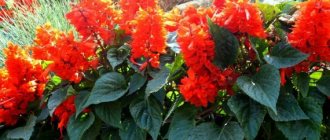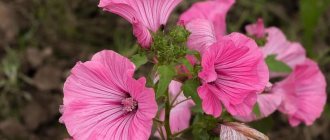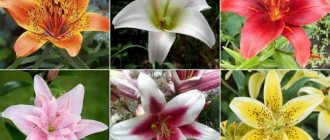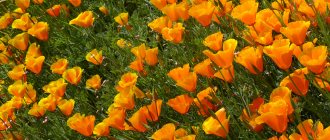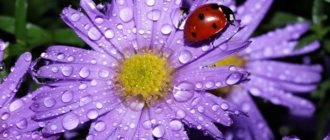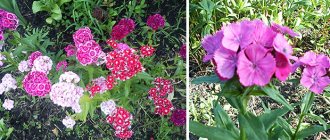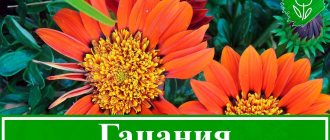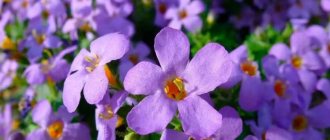Author: Elena N. https://floristics.info/ru/index.php?option=com_contact&view=contact&id=19 Category: Garden plants Published: February 26, 2019Last edits: January 13, 2021
- When to plant
- Rules of care
- How and when to collect seeds
- Gazania longiscapa
Gazania, or gazania, was brought to Europe from Mozambique. Today it is a popular garden crop everywhere. Gatsania crops produce almost one hundred percent germination, and flowering occurs quickly. One plant can have more than thirty inflorescences. Not only the golden baskets of gatsania are attractive, but also its bright green foliage, and some cultivars have downy stems and leaves, which gives them additional decorativeness.
From our article you will learn important details:
- about growing gatsaniya from seeds;
- about caring for the plant during the season;
- about how to collect seeds from a plant and how to preserve gatsaniya until spring.
Origin
South Africa is considered the birthplace of gatsania, which is why it is often called African chamomile. In appearance, the flower is very reminiscent of the popular Russian favorite, which has a brighter outfit and a slightly enlarged bud.
The official name of the plant comes from the name of the Italian translator Theodor von Gaza, so it would be more correct to call the plant “Gazania”.
The name “Flower of the Midday Sun” became a more poetic name. This is due to the fact that the unusual bright petals open as fully as possible at midday.
In the wild, gazania is still found in Africa and Mozambique, as well as in some areas of Australia.
The flower came to Europe in the 17th century and immediately won the love of gardeners for its exquisite bright colors and the unusual shape of the blossoming bud. In Russia, gatsania flowers are still quite rare.
Popular types of gazania
There are many known varieties, the most famous are shown in the table.
| Variety | Flower color and size (cm), other |
| Ampelnaya | Bright yellow, 2.5-4. The leaves are silvery, pubescent. |
| Hard (Shiny) | Orange, golden yellow, 4-8. The petals have dark spots near the core. |
| Linear (Long Rifle or Potsie) | White, orange, yellow, up to 8. Petals are very elongated. |
| Krebs (Peacock) | Dark red, orange with dark spots at the beginning of the petals. Low-growing with a weak root system. |
| Hybrid | White, golden yellow, crimson, orange, 7-10. Cold-resistant. |
Description
The growth of the flower does not exceed 30 centimeters. A small stem holds the flowers themselves and the basal leaves, forming a dense rosette.
The leaves have dark green or gray-green shades; on the back there are tiny hairs that retain heat when temperatures drop and water during dry periods. Bright flower baskets reach 9 centimeters and amaze with their bright colors.
The most common:
- bright yellow and orange;
- fire and bronze;
- rich and delicate pinks;
- white and purple petals.
During the season, gazania can produce approximately 30 buds, but under normal conditions it will produce only 10-12 flowers.
general information
People very romantically called gatsaniya “midday gold,” and all because the flower opens most beautifully in the midday sun. This is a low plant, rarely more than 30 cm, with beautiful dark leaves and a short stem. On the reverse side, the leaf plates are slightly fleecy to protect against pests, frost and to retain moisture.
Despite their overall miniature size, gatsania flowers are quite large, blooming up to 10 cm. They look like baskets collected from smaller inflorescences. The most common colors are yellow, orange and red. One small plant can produce more than 30 buds.
Gatsania blooms around mid-summer, but some late varieties bloom in August. At the same time, she will decorate the garden with her colorful buds almost until the end of autumn.
Photo: mocah.org
Annual or perennial?
The description of the original plant would be incomplete without indicating the age of life of the elegant inhabitant of the flower beds.
In its historical homeland, gatsaniya does not experience any difficulties with growth and tolerates “winter” well, being a perennial plant. In Russia and Europe, the flower does not tolerate cold weather and is considered an annual.
Of course, you can carefully dig up this representative of the kingdom of Flora and transport it to a city apartment or a comfortable private house, but the plant does not always survive even in such greenhouse conditions, so it is still better to grow a flower every season.
Selecting a location
The tropical resident is very sensitive to temperature changes and requires constant good lighting.
A place for it is chosen on the sunny side, away from large trees or buildings that can create shadow.
The type of soil does not play a special role; gatsania is grown on any soil if it:
- easy;
- fertile;
- water permeable.
The distance between plants should be at least 20 centimeters, so you will have to find a larger place for seedlings.
Pest and disease control
Gazania is a rather delicate flower and is susceptible to pests such as aphids and spider mites. In this case, it is better to prevent the attack in advance and treat the garden prophylactically with insecticides. In addition, some fragrant herbs nearby repel parasites.
Another problem is snails. They will have to be removed mechanically, or their natural enemies, such as hedgehogs or birds, will be attracted. For preventive spraying, spicy herbs, tea, coffee and hot pepper are used.
Of the diseases, gatsaniya is most often affected by gray rot, because this flower is very sensitive to high humidity. Brown spots appear on the leaves and grow rapidly.
Don't plant seedlings too close, thin out as needed, don't overwater the leaves, and remove all affected areas immediately. To treat a diseased plant, use fungicides or other specialized preparations.
Photo: albinos76.livejournal.com
Daffodils (60 photos): types, planting and care in open ground
Growing
In warm areas, growing from seeds can be done outdoors, but most gardeners will have to use the seedling method.
Gatsania seeds are placed in the ground in mid-February-early March. The preferred option would be to use peat pots, which are later transferred to a permanent place of residence without damaging the roots.
Planting material is planted in a large container in a checkerboard pattern at a distance of at least 4 centimeters from future neighbors.
After planting is completed, the soil is carefully watered, the container is covered with glass or film, and the pots are placed in a warm place. Sprouts should appear in one and a half to two weeks. All this time it is necessary to monitor the humidity of the earthen ball, the absence of condensation on the glass and the presence of fresh air.
After germination, the container with seedlings is transferred to a well-lit place and the temperature is slightly reduced. In April, the pots can be sent to a glazed but unheated loggia, monitoring the temperature. An ideal environment would be a place with a thermometer reading of 12-15 degrees.
Collecting seeds
Unfortunately, our climatic conditions do not allow gazania seeds to ripen to the end. This happens only in unique cases, when the summer drags on a little and is especially dry and hot. In addition, in cultivation you can most often find hybrid varieties that, after sowing with collected seeds, do not retain their varietal qualities. But the most important obstacle to collecting gatsania seeds is that after ripening they simply scatter, like dandelions. That is why more experienced gardeners watch gatsaniya and, as soon as it begins to bloom, wrap the flowers in a bag or gauze so as not to lose the seeds.
Transfer
Planting gatsaniya outdoors is not difficult. For normal development of the plant, planting holes with a depth of 20 to 30 centimeters are required, depending on the height of the pot. It is recommended to put a layer of grass without roots and seeds at the bottom. This will provide the gazania with fertilizers and remove excess moisture.
When growing seedlings in containers not intended for burial in the soil, the plants are removed very carefully. It is important not to damage the roots and preserve the earthen ball.
The optimal time to plant gazania in open ground depends on the climatic conditions of the area and the specific year. In any case, it is better to postpone this event until the frosts are completely over. Most often this procedure is carried out in May-early June.
If planting and caring for gazania in the open ground proceeds correctly, the flowers will appear in 1.5-2 months.
Care
Caring for a gazania is not too difficult. The plant needs:
- regular loosening and weeding;
- moderate watering;
- feeding
A resident of hot countries is watered only during the dry season; in a normal summer, rainwater will be enough for her.
Fertilizing is carried out with mineral fertilizers once a month.
After the bud fades, it must be trimmed. This will enable the plant to form a new flower.
Use in landscape design
As the photo of gatsania shows, the plant will wonderfully decorate any flower beds and create amazing borders. It can be planted individually or in whole families, achieving a mixture of bright colors.
Low plants without flowers or with blue buds will look great next to gazania. Alpine slides and rockeries will decorate well with elegant gatsaniyas.
The plant can also please gardeners who are deprived of their own plot of land, charmingly decorating balconies and window sills.
Flowers
As for the inflorescences, they are presented in the form of single baskets, which do not exceed nine centimeters in diameter. They consist of reed flowers that are orange, red or yellow. Dark spots are visible at the base, which form a certain pattern around the yellow center, which, by the way, is represented by tubular flowers. Please note that up to thirty-five such inflorescences can grow on one plant. It has gatsaniya and a fruit, which is presented in the form of an achene with a tuft.
Next, we will take a closer look at the photo of gatsaniya, growing this plant on the site, as well as its features.



